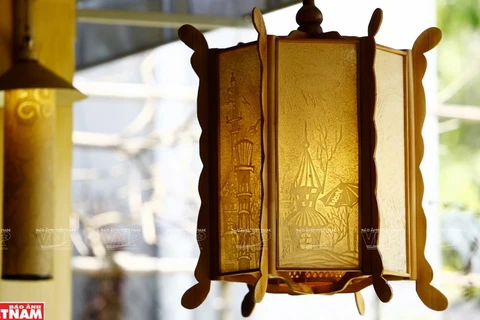 The mausoleum of Gia Long, the first Nguyen Dynasty king, reigning 1802-1820, is located in Dinh Mon Village of Huong Tra District, about 20 kilometers west of downtown Hue. (Photo: vnexpress.net)
The mausoleum of Gia Long, the first Nguyen Dynasty king, reigning 1802-1820, is located in Dinh Mon Village of Huong Tra District, about 20 kilometers west of downtown Hue. (Photo: vnexpress.net)  Minh Mang was the second Nguyen ruler, reigning 1820-1839. His tomb is located on Cam Khe Mountain, around 12 kilometers from downtown Hue. It took three years (1840-1843) and 10,000 workers and soldiers to complete. (Photo: vnexpress.net)
Minh Mang was the second Nguyen ruler, reigning 1820-1839. His tomb is located on Cam Khe Mountain, around 12 kilometers from downtown Hue. It took three years (1840-1843) and 10,000 workers and soldiers to complete. (Photo: vnexpress.net)  An aerial view of Thieu Tri Mausoleum, the tomb of Emperor Thieu Tri, the third Nguyen Dynasty king (1841-1847). This area, located in Huong Thuy District, around eight kilometers from Hue's centre, is part of the Hue Monuments Complex recognised by UNESCO as a world cultural heritage site in 1993. (Photo: vnexpress.net)
An aerial view of Thieu Tri Mausoleum, the tomb of Emperor Thieu Tri, the third Nguyen Dynasty king (1841-1847). This area, located in Huong Thuy District, around eight kilometers from Hue's centre, is part of the Hue Monuments Complex recognised by UNESCO as a world cultural heritage site in 1993. (Photo: vnexpress.net)  The tomb of Tu Duc, known as Khiem Tomb, is considered the most beautiful tomb work among the seven tombs of the Nguyen Dynasty. With a particularly diverse and sophisticated architecture, the tomb of Tu Duc was built under the reign of Tu Duc King in the form of a complex in a charming landscape. (Photo: vnexpress.net)
The tomb of Tu Duc, known as Khiem Tomb, is considered the most beautiful tomb work among the seven tombs of the Nguyen Dynasty. With a particularly diverse and sophisticated architecture, the tomb of Tu Duc was built under the reign of Tu Duc King in the form of a complex in a charming landscape. (Photo: vnexpress.net)  King Duc Duc's mausoleum, also known as An Lang, is located in An Cuu Ward, around two kilometers from downtown Hue. The area covers nearly six hectares, including the tombs of the king, queen and 42 princes and princesses. (Photo: vnexpress.net)
King Duc Duc's mausoleum, also known as An Lang, is located in An Cuu Ward, around two kilometers from downtown Hue. The area covers nearly six hectares, including the tombs of the king, queen and 42 princes and princesses. (Photo: vnexpress.net)  Hiep Hoa's mausoleum is the burial place of King Hiep Hoa. The son of King Thieu Tri, he ascended the throne at 37 and only reigned for four months as the sixth Nguyen Dynasty emperor before being deposed in November 1883. The site is located in a deserted pine forest of An Tay Ward. After 130 years, in August 2013, Hiep Hoa's mausoleum was restored but remains a lesser-known destination. (Photo: vnexpress.net)
Hiep Hoa's mausoleum is the burial place of King Hiep Hoa. The son of King Thieu Tri, he ascended the throne at 37 and only reigned for four months as the sixth Nguyen Dynasty emperor before being deposed in November 1883. The site is located in a deserted pine forest of An Tay Ward. After 130 years, in August 2013, Hiep Hoa's mausoleum was restored but remains a lesser-known destination. (Photo: vnexpress.net) VNA























